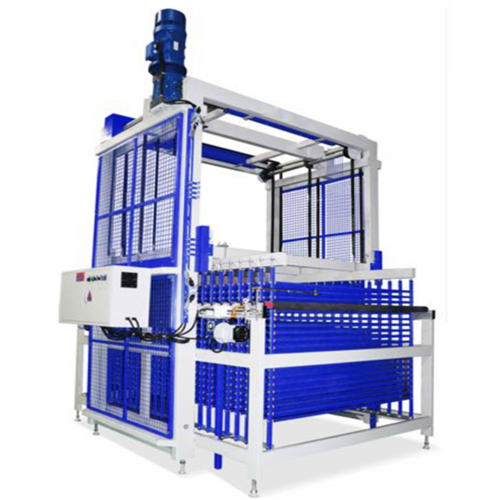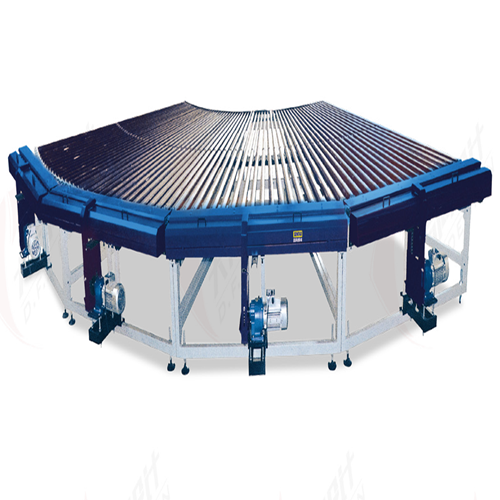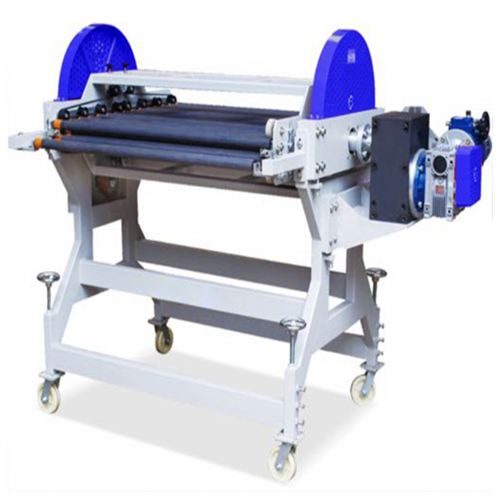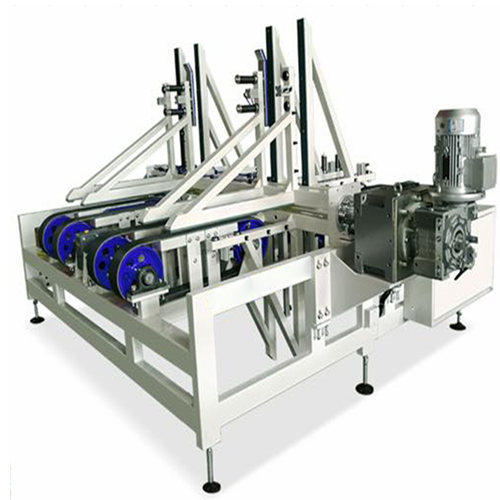Common Compensator: Optimizing Ceramic Tile Glazed Lines
In the ceramic tile manufacturing industry, efficiency, precision, and seamless integration of production processes are vital for success. One of the key innovations enabling these attributes is the Common Compensator, a highly specialized machine that plays a critical role in ceramic tile glazed lines. Designed to ensure smooth material flow and accommodate varying production requirements, the Common Compensator is an indispensable component in modern ceramic manufacturing.
As a global leader in ceramic tile machinery, Aexea International has developed and supplied advanced Common Compensators tailored to the unique demands of the industry. This article explores the Common Compensator in detail, including its functionality, technical aspects, applications, and the advantages it offers to manufacturers.
Overview of the Common Compensator
A Common Compensator is a machine designed to balance and regulate the flow of ceramic tiles on a production line, particularly in glazing processes. It ensures that tiles are uniformly spaced and aligned while compensating for variations in production speeds, line stoppages, or downstream bottlenecks. By maintaining consistent material handling, the Common Compensator optimizes the efficiency and reliability of the entire production line.
Key Features of the Common Compensator
Aexea International’s Common Compensator incorporates cutting-edge features to address the demands of modern ceramic tile production:
Dynamic Flow Adjustment
- The compensator automatically adjusts tile flow rates to match production line speeds and prevent congestion.
- It regulates spacing between tiles for uniform glaze application.
High-Precision Alignment
- Advanced alignment mechanisms ensure that tiles remain correctly positioned as they pass through the glazing line.
- This precision reduces defects caused by misalignment.
Modular Design
- The modular structure allows easy integration into existing production lines.
- Components can be customized based on specific production requirements.
Durable Construction
- Built with high-grade materials, the compensator is designed to withstand the wear and tear of continuous operation.
Energy Efficiency
- Energy-saving technologies reduce operational costs without compromising performance.
Intelligent Control System
- A user-friendly interface and programmable logic controller (PLC) enable operators to configure and monitor the machine with ease.
- Real-time data tracking enhances operational visibility.
Safety Features
- Emergency stop functions, overload protection, and fail-safe mechanisms ensure safe operation.
Applications in the Ceramic Tile Glazed Line
The Common Compensator plays a pivotal role in various stages of the ceramic tile glazed line:
Pre-Glazing Alignment
- Ensures tiles are correctly oriented and spaced before entering glazing machines.
Post-Glaze Handling
- Compensates for variations in tile flow to ensure smooth transitions to drying or firing stages.
Inspection Line Integration
- Maintains consistent tile spacing for accurate quality control and defect detection.
Packaging Preparation
- Ensures that tiles are uniformly arranged for efficient stacking and packaging.
Production Line Synchronization
- Balances the flow of tiles between machines with differing operational speeds, ensuring optimal line synchronization.
Advantages of the Common Compensator
The integration of a Common Compensator into ceramic tile production lines offers a range of benefits:
Increased Efficiency
- By regulating tile flow and spacing, the compensator reduces downtime and ensures consistent production speeds.
Enhanced Product Quality
- Proper alignment minimizes defects in glazing and other processes, resulting in higher-quality tiles.
Reduced Material Waste
- Accurate spacing and alignment reduce glaze overspray and other forms of material wastage.
Cost Savings
- Automation minimizes manual handling, reducing labor costs and the risk of errors.
Flexibility and Scalability
- The machine’s modular design allows it to accommodate various tile sizes, shapes, and production capacities.
Space Optimization
- Compact design enables the compensator to fit seamlessly into existing production lines without requiring additional floor space.
Improved Safety
- Automation and safety features reduce the likelihood of workplace accidents.
Future Trends in Common Compensators
The Common Compensator is expected to evolve alongside advancements in ceramic tile production technology:
IoT and Industry 4.0 Integration
- Future compensators will feature IoT connectivity for real-time monitoring, predictive maintenance, and enhanced operational insights.
AI-Driven Automation
- Artificial intelligence will enable dynamic adjustments to tile flow and alignment based on real-time data.
Eco-Friendly Innovations
- Incorporating sustainable materials and energy-efficient designs will further reduce the machine’s environmental impact.
Smart Modularity
- Modular components will enable manufacturers to scale and customize machines easily.
To summarize:
The Common Compensator represents a critical advancement in ceramic tile production, addressing the challenges of efficiency, precision, and material handling. By ensuring consistent tile flow and alignment, the machine optimizes glazing processes and enhances overall production quality.
Aexea International’s commitment to innovation and excellence is evident in its development of the Common Compensator. With customized solutions, expert support, and a focus on sustainability, Aexea continues to set new standards in the ceramic tile manufacturing industry. As the industry evolves, the Common Compensator will remain an indispensable tool for manufacturers seeking to achieve excellence in their production lines.




